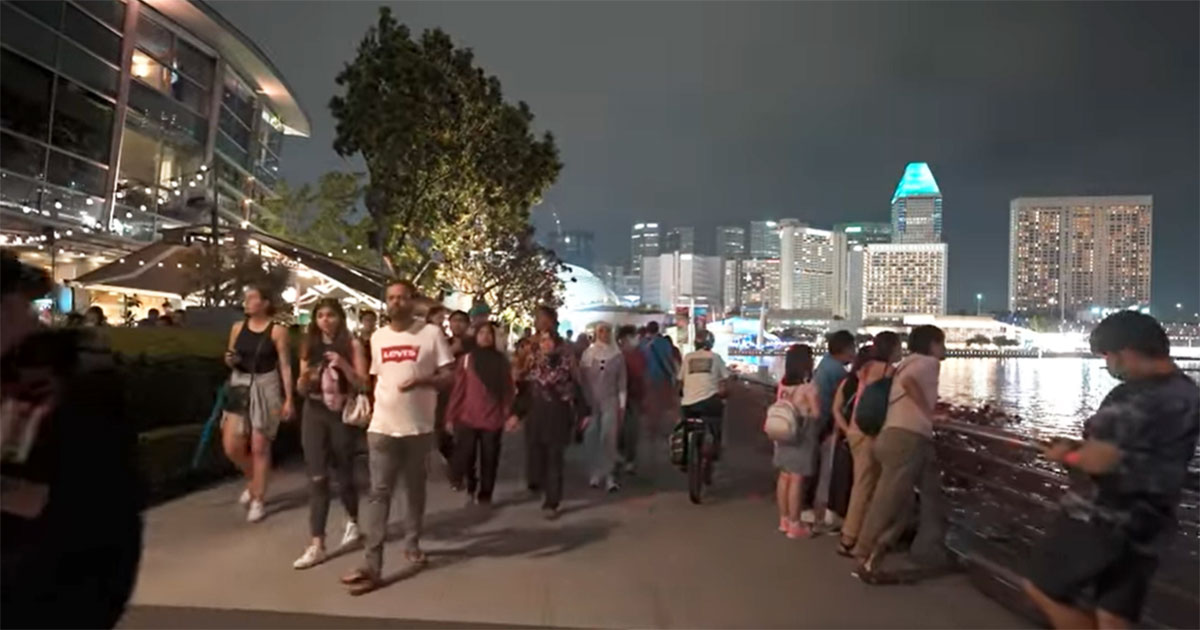Follow us on Telegram for the latest updates: https://t.me/mothershipsg
The Omicron XBB variant was first detected in August 2022 in India and has since been detected in more than 17 countries, including Australia, Bangladesh, Denmark, Japan and the U.S.
According to the Ministry of Health (MOH) in a press release on Saturday, Oct. 15, while observations from countries where XBB has been reported suggested that it is at least as transmissible as currently circulating variants, there is no evidence that XBB causes more severe illness.
XBB is now the predominant Covid variant in Singapore
Within Singapore, Covid-19 cases have been on the rise, mainly due to this particular subvariant.
The ministry noted that XBB is now the predominant subvariant circulating in the community, accounting for 54 per cent of local cases during the week of Oct. 3 to Oct. 9, from 22 per cent the previous week.
The previously dominant subvariant, BA.5, is now estimated to account for 21 per cent of local cases, while the subvariant BA.2.75 is estimated to account for 24 per cent of cases.
In addition, there is evidence that XBB may be driving an increase in reinfections.
The proportion of reinfections among total Covid-19 cases in Singapore has been increasing over the past month, with reinfections currently making up about 17 per cent of total new cases.
MOH said: "Given that immunity from natural infection in the population is likely waning over time, this underscores the importance of ensuring minimum protection from vaccination and keeping our vaccinations up to date to protect us against severe infections."
Healthcare capacity remains protected
To date, the increase in hospitalised cases remains proportionate to the rise in overall local cases, the ministry added.
The number of severe cases has also remained low.
As of Oct. 14, the number of cases hospitalised, requiring oxygen supplementation and in the intensive care unit (ICU) are at 562, 44 and 9 respectively, compared to 365, 37 and 13 a week ago.
This is despite the seven-day moving average of local cases rising from 4,714 to 7,716 cases over the same period.
The ministry added that based on current information, it expects that this XBB infection wave will peak by around mid-November 2022.
Using the BA.5 wave as an indication, hospitalised cases then peaked at 800 in July 2022, and hospitals, while stretched, were able to cope with the numbers.
"Given that we are able to quickly ramp up to the same capacity and beyond, our projections on healthcare utilisation show that we have adequate ICU, hospital and Covid-19 Treatment Facility (CTF) beds to cope with the upcoming wave," MOH said.
Public hospitals activated measures
In response to the surge over the past two weeks, public hospitals have rapidly activated various measures to operate about additional 200 beds to care for hospitalised Covid-19 patients.
These include deferring non-urgent admissions, discharging stable patients home or to nursing homes, and transferring recovering patients to transitional care facilities and community hospitals.
In the coming two weeks, public hospitals will operate a total of more than 800 beds for Covid-19 patients.
CTF capacity will be ramped up in stages to provide over 800 beds by early November.
Members of public are encouraged to only go to the Emergency Department (ED) for emergency conditions as there is still a high number of patients daily, mostly for non-Covid related conditions.
Patients who are triaged to be non-serious may be requested by the EDS to be diverted to Urgent Care Centres or nearby primary care clinics for management.
To relieve the load on general practitioner (GP) clinics and polyclinics, MOH also urges employers not to require medical certificates (MC) from employees who have either self-tested positive for Covid-19 or have Acute Respiratory Infection (ARI) symptoms.
This is to avoid patients with mild or no symptoms making unnecessary visits to GP clinics, which would compromise the standard of care for other patients who require medical attention.
Those who are well should be allowed to work from home if they are able to do so.
The ministry also encourages those with mild flu-like symptoms to consider teleconsultation with their doctor.
They may visit the the following site for a list of telemedicine providers.
Top photo via
If you like what you read, follow us on Facebook, Instagram, Twitter and Telegram to get the latest updates.
